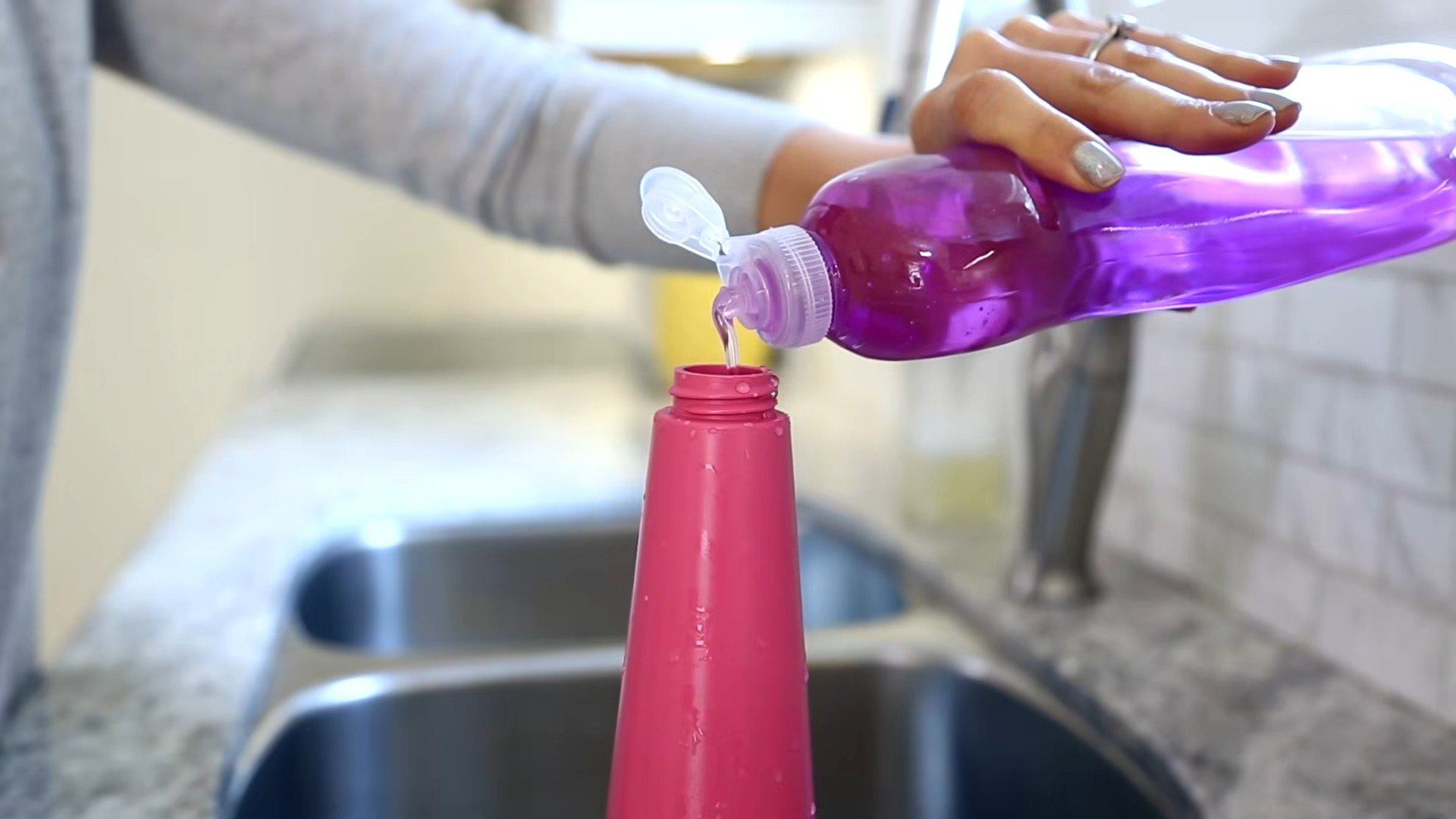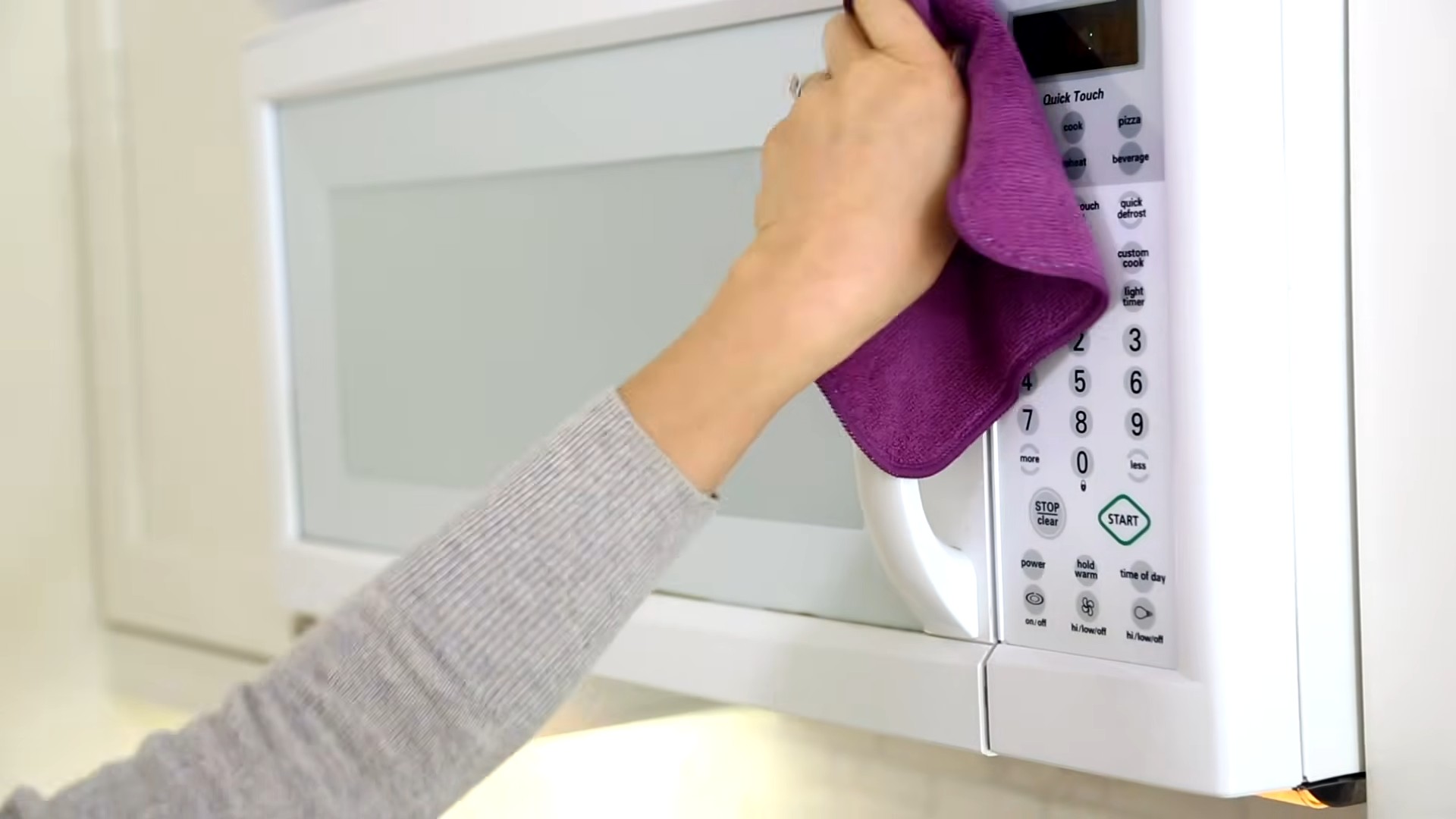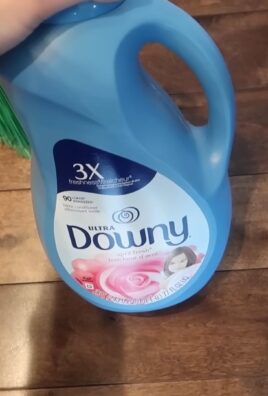Dish soap house cleaning: it’s a phrase that might conjure up images of sparkling dishes, but did you know its cleaning power extends far beyond the kitchen sink? For generations, resourceful homemakers have relied on the humble bottle of dish soap for a multitude of cleaning tasks. Think of your grandmother, perhaps, using a diluted solution to gently clean delicate fabrics or remove stubborn stains – a testament to its versatility and gentle nature.
But in today’s world, filled with specialized (and often expensive!) cleaning products, we sometimes forget the simple, effective solutions right under our noses. That’s where this DIY guide comes in! I’m going to share some amazing dish soap house cleaning tricks that will not only save you money but also reduce your reliance on harsh chemicals.
Why do you need these hacks? Because a clean home shouldn’t cost a fortune or expose you to potentially harmful ingredients. From degreasing kitchen surfaces to tackling grimy bathroom tiles, dish soap can be your secret weapon. So, ditch the clutter of single-use cleaners and let’s unlock the surprising cleaning potential of this everyday essential!

DIY All-Purpose Dish Soap Cleaning Solution: Sparkling Clean Home on a Budget
Okay, let’s be honest, cleaning can be a drag. But it doesn’t have to break the bank or involve harsh chemicals that make your eyes water. I’m going to show you how to create an amazing all-purpose cleaning solution using something you probably already have under your sink: dish soap! This DIY cleaner is effective, budget-friendly, and surprisingly versatile. Get ready to ditch those expensive store-bought cleaners and embrace a simpler, greener way to keep your home sparkling.
What You’ll Need
Before we dive in, let’s gather our supplies. The beauty of this DIY cleaner is that it requires minimal ingredients and equipment.
* Dish Soap: Choose a grease-cutting dish soap. I prefer a clear, unscented variety to avoid any potential staining or overpowering smells, but any dish soap will work. Just be mindful of the color if you’re using it on light surfaces.
* White Vinegar: This is our secret weapon! Vinegar is a natural disinfectant and deodorizer. The acidity helps cut through grime and leave surfaces sparkling.
* Water: Distilled water is ideal to prevent mineral buildup, but tap water works just fine too.
* Essential Oils (Optional): If you want to add a pleasant scent, essential oils are a great option. Lemon, lavender, tea tree, and eucalyptus are all popular choices for cleaning.
* Spray Bottle: A clean, empty spray bottle is essential for dispensing your cleaning solution.
* Measuring Cups and Spoons: For accurate measurements.
* Microfiber Cloths: These are my go-to for cleaning. They’re absorbent, lint-free, and great for scrubbing.
The Basic Recipe: All-Purpose Cleaning Spray
This is the foundation of our DIY cleaning arsenal. It’s perfect for countertops, sinks, appliances, and most hard surfaces.
Step 1: Gather Your Ingredients and Supplies
Make sure you have everything listed above within easy reach. This will make the process smoother and more efficient.
Step 2: Combine Water and Vinegar
In your measuring cup, combine 1 cup of water and 1 cup of white vinegar. Pour this mixture into your spray bottle.
Step 3: Add Dish Soap
Now, add 1-2 tablespoons of dish soap to the spray bottle. Start with 1 tablespoon and add more if you feel you need a stronger cleaning solution. Be careful not to add too much, as it can make the solution too sudsy.
Step 4: Add Essential Oils (Optional)
If you’re using essential oils, add 10-20 drops to the spray bottle. I usually go for 15 drops of lemon essential oil for a fresh, clean scent.
Step 5: Gently Mix the Solution
Close the spray bottle tightly and gently shake it to combine all the ingredients. Avoid shaking too vigorously, as this can create excessive suds.
Step 6: Test Before Use
Before using the cleaner on a large surface, test it on a small, inconspicuous area to ensure it doesn’t damage or discolor the material.
Step 7: Start Cleaning!
Spray the solution onto the surface you want to clean and let it sit for a few seconds. Then, wipe it clean with a microfiber cloth. For stubborn stains, you may need to scrub a little harder.
Tackling Specific Cleaning Challenges
Now that you have the basic recipe down, let’s explore how to adapt it for different cleaning tasks around the house.
Cleaning Kitchen Counters and Sinks
Kitchens are notorious for grime and grease. This solution works wonders on countertops, sinks, and even stovetops (make sure the stovetop is cool!).
* Spray: Generously spray the solution onto the surface.
* Let it Sit: Allow it to sit for a minute or two to loosen the grime.
* Scrub: Use a sponge or microfiber cloth to scrub away any stubborn stains.
* Rinse (Optional): If you’re cleaning a surface that comes into contact with food, rinse it with clean water after wiping.
* Dry: Wipe the surface dry with a clean microfiber cloth.
Bathroom Cleaning: Showers, Toilets, and Sinks
Bathrooms can be breeding grounds for bacteria and mildew. The vinegar in this solution helps disinfect and prevent mold growth.
* Shower and Tub: Spray the solution onto the shower walls, floor, and tub. Let it sit for 5-10 minutes to allow the vinegar to work its magic. Use a scrub brush or sponge to scrub away soap scum and mildew. Rinse thoroughly with water.
* Toilet: Spray the solution inside and outside the toilet bowl. Let it sit for a few minutes, then scrub with a toilet brush. Flush the toilet to rinse. Wipe down the exterior of the toilet with a clean microfiber cloth.
* Bathroom Sinks: Spray the solution onto the sink and faucet. Wipe clean with a microfiber cloth. For stubborn water spots, you can use a paste of baking soda and water.
Cleaning Floors (Hardwood, Tile, and Laminate)
This solution can also be used to clean floors, but you’ll need to dilute it further to avoid leaving a soapy residue.
* Prepare the Solution: In a bucket, combine 1 gallon of warm water with 1/4 cup of the dish soap cleaning solution.
* Mop the Floor: Dip a mop into the solution and wring out the excess water. Mop the floor in sections, rinsing the mop frequently.
* Dry the Floor: Allow the floor to air dry or use a clean, dry mop to dry it.
Important Note: Always test the solution on a small, inconspicuous area of the floor before cleaning the entire surface. Avoid using this solution on waxed hardwood floors, as it can strip the wax.
Cleaning Windows and Mirrors
Yes, you can even use this solution to clean windows and mirrors! The vinegar helps cut through streaks and leave a sparkling shine.
* Dilute the Solution: In a spray bottle, combine 1 cup of water with 1 tablespoon of the dish soap cleaning solution.
* Spray the Surface: Lightly spray the solution onto the window or mirror.
* Wipe Clean: Use a clean microfiber cloth or squeegee to wipe the surface clean.
* Dry: Dry the surface with a clean, dry microfiber cloth to prevent streaks.
Degreasing Kitchen Appliances
Grease buildup on kitchen appliances can be a real pain. This solution is surprisingly effective at cutting through grease and grime.
* Stovetop: Spray the solution onto the stovetop and let it sit for a few minutes. Use a sponge or scrub brush to scrub away the grease. Rinse with water and dry with a clean cloth.
* Oven: For light grease buildup, you can spray the solution inside the oven and wipe it clean. For heavier grease, you may need to use a stronger oven cleaner.
* Microwave: Heat a cup of water with a few tablespoons of the cleaning solution in the microwave for a few minutes. The steam will loosen the grease and grime, making it easy to wipe clean.
* Range Hood: Spray the solution onto the range hood and let it sit for a few minutes. Use a sponge or scrub brush to scrub away the grease. Rinse with water and dry with a clean cloth.
Tips and Tricks for Success
* Adjust the Recipe: Feel free to adjust the recipe to suit your needs. If you find that the solution is too soapy, reduce the amount of dish soap. If you need a stronger cleaning solution, add more vinegar.
* Use Warm Water: Warm water helps dissolve grease and grime more effectively.
* Don’t Overuse Dish Soap: Too much dish soap can leave a sticky residue. Start with a small amount and add more if needed.
* Rinse Thoroughly: If you’re cleaning a surface that comes into contact with food, rinse it thoroughly with clean water after wiping.
* Store Properly: Store your DIY cleaning solution in a cool, dark place. It should last for several months.
* Label Your Bottles: Always label your spray bottles clearly to avoid confusion.
* Safety First: While this cleaning solution is relatively safe, it’s always a good idea to wear gloves when cleaning, especially if you have sensitive skin. Avoid spraying the solution directly into your eyes.
Troubleshooting
* Streaky Surfaces: If you’re getting streaks, you may be using too much dish soap or not drying the surface thoroughly. Try reducing the amount of dish soap and using a clean, dry microfiber cloth to dry the surface.
* Soapy Residue: If you’re getting a soapy residue, you may be using too much dish soap or not rinsing the surface thoroughly. Try reducing the amount of dish soap and rinsing the surface with clean water after wiping.
* Strong Vinegar Smell: The vinegar smell will dissipate quickly. If

Conclusion
So, there you have it! This simple dish soap house cleaning trick is more than just a budget-friendly alternative to expensive commercial cleaners; it’s a game-changer for maintaining a sparkling and healthy home. We’ve explored how the degreasing power of dish soap, combined with its gentle nature, makes it a versatile solution for tackling grime and dirt throughout your house. From shining your kitchen counters to revitalizing your bathroom tiles, this DIY method offers a powerful clean without the harsh chemicals often found in store-bought products.
Why is this a must-try? Because it’s effective, economical, and environmentally conscious. You’re likely already using dish soap daily, so you have the key ingredient readily available. By repurposing it for broader cleaning tasks, you’re reducing waste and saving money. Plus, you’re minimizing your exposure to potentially harmful chemicals, creating a safer environment for yourself, your family, and your pets.
But the beauty of this DIY approach lies in its adaptability. Feel free to experiment with variations to suit your specific needs and preferences. For instance, add a few drops of your favorite essential oil, like lavender or lemon, for a refreshing scent boost. For tougher stains, create a paste by mixing dish soap with baking soda for extra scrubbing power. You can even use a diluted dish soap solution in your carpet cleaner for a gentle yet effective deep clean. Remember to always test any cleaning solution in an inconspicuous area first to ensure it doesn’t damage the surface.
We’ve covered a range of applications, from cleaning windows and mirrors to degreasing ovens and stovetops. We’ve highlighted the importance of dilution ratios and the proper techniques for achieving optimal results. We’ve even touched upon the benefits of using dish soap for cleaning your car’s exterior. The possibilities are truly endless!
Ultimately, the success of this dish soap house cleaning trick depends on your willingness to give it a try. We’re confident that you’ll be amazed by the results. So, ditch the expensive cleaners, grab your bottle of dish soap, and get ready to experience the joy of a truly clean and healthy home.
We encourage you to embark on this cleaning adventure and discover the power of this simple yet effective DIY solution. Once you’ve tried it, we’d love to hear about your experience! Share your tips, tricks, and success stories in the comments below. Let’s build a community of clean-home enthusiasts who are passionate about sustainable and affordable cleaning solutions. Your feedback will not only help others but also inspire us to continue exploring innovative and eco-friendly cleaning methods. Let’s make dish soap house cleaning the new standard for a sparkling and healthy home!
Frequently Asked Questions
Is dish soap safe to use on all surfaces?
While dish soap is generally gentle, it’s crucial to exercise caution and test any cleaning solution in an inconspicuous area before applying it to the entire surface. Avoid using dish soap on porous surfaces like unfinished wood, as it can absorb the soap and cause damage. Also, be mindful of delicate materials like silk or leather, which may require specialized cleaning products. For surfaces like granite or marble, use a pH-neutral dish soap to prevent etching or discoloration. Always rinse thoroughly with clean water after cleaning with dish soap to remove any residue.
What type of dish soap is best for cleaning?
The best type of dish soap for cleaning depends on the specific task. For general cleaning, a standard, non-antibacterial dish soap is usually sufficient. However, for tougher grease and grime, consider using a dish soap specifically formulated for degreasing. Avoid using dish soaps that contain harsh chemicals or abrasives, as these can damage surfaces. Opt for a pH-neutral dish soap to protect delicate materials. Ultimately, the key is to choose a dish soap that is effective at cleaning without being too harsh or damaging.
How much dish soap should I use in my cleaning solutions?
The amount of dish soap you use in your cleaning solutions will vary depending on the task and the concentration of the dish soap. As a general rule, start with a small amount, such as a teaspoon or tablespoon per gallon of water, and adjust as needed. For heavily soiled areas, you may need to increase the concentration of dish soap. However, be careful not to use too much dish soap, as this can leave a residue that is difficult to rinse off. Always follow the instructions on the dish soap bottle and test the solution in an inconspicuous area before applying it to the entire surface.
Can I use dish soap to clean my laundry?
While dish soap can be used as a laundry detergent in a pinch, it’s not recommended for regular use. Dish soap is designed to cut through grease and grime, which can be too harsh for delicate fabrics. Additionally, dish soap can create excessive suds in your washing machine, which can be difficult to rinse out and may even damage your machine. If you must use dish soap as a laundry detergent, use a very small amount (about a teaspoon) and dilute it well with water. Opt for a gentle, pH-neutral dish soap and avoid using it on delicate fabrics. For regular laundry, it’s best to use a detergent specifically formulated for washing clothes.
Is dish soap safe for septic systems?
Most dish soaps are safe for septic systems when used in moderation. However, it’s important to choose a dish soap that is biodegradable and phosphate-free. Phosphates can disrupt the balance of bacteria in your septic system, which can lead to clogs and other problems. Also, avoid using excessive amounts of dish soap, as this can overload your septic system. If you’re concerned about the impact of dish soap on your septic system, consider using a septic-safe dish soap or a natural alternative like baking soda and vinegar.
Can I use dish soap to clean my car?
Yes, dish soap can be used to clean your car, but it’s important to use it sparingly and with caution. Dish soap can strip the wax off your car’s paint, leaving it vulnerable to scratches and damage. If you choose to use dish soap to clean your car, use a very diluted solution (about a tablespoon per gallon of water) and rinse thoroughly with clean water. Avoid using dish soap on a regular basis, and consider using a car wash soap specifically formulated for cleaning vehicles. These soaps are designed to be gentle on your car’s paint and will not strip the wax.
How do I remove dish soap residue from surfaces?
If you’ve used too much dish soap or haven’t rinsed thoroughly, you may notice a soapy residue on surfaces. To remove dish soap residue, simply rinse the surface with clean water. You may need to rinse multiple times to remove all of the residue. For stubborn residue, try wiping the surface with a damp cloth and then drying it with a clean towel. You can also use a solution of vinegar and water to remove dish soap residue. Mix equal parts vinegar and water and spray the solution onto the surface. Let it sit for a few minutes, then wipe it clean with a damp cloth.
What are some natural alternatives to dish soap for cleaning?
If you’re looking for natural alternatives to dish soap for cleaning, there are several options to choose from. Baking soda is a great all-purpose cleaner that can be used to scrub surfaces, deodorize, and remove stains. Vinegar is another effective cleaner that can be used to disinfect, remove hard water stains, and clean windows. Lemon juice is a natural degreaser and can be used to clean cutting boards, countertops, and other surfaces. Castile soap is a gentle, plant-based soap that can be used for a variety of cleaning tasks. You can also use essential oils like tea tree oil, lavender oil, and lemon oil for their antibacterial and antifungal properties.





Leave a Comment